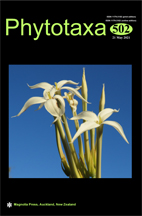Abstract
Trichoderma speies are known for their diverse applications as potent bio-control organisms. 34 isolates of Trichoderma were obtained from various geographical locations in India and were subjected to phenotypic evaluation. Species identification if based on only morphology, may lead to sometimes erroneous, uncertain or remains unclear due to overlapping characters. Therefore, molecular characterization was also performed based on ITS region sequence analysis for reliable identification using both morphological and molecular characters. The isolates were identified into 20 different species viz., T. aggressivum, T. asperellum, T. atroviride, T. brevicompactum, T. citrinoviride, T. crassum, T. erinaceum, T. ghanense, T. hamatum, T. harzianum, T. koningiopsis, T. longibrachiatum, T. longipile (Syn. Hypocrea longipilosa), T. minutisporum, T. pubscenes, T.reesei, T. saturnisporum, T. spirale, T. tomentosum and T. virens based on the integrated approach of both morphological and molecular characterisation. ß-tub gene sequence analysis was also performed to find out the phylogenetic relationship of these species. The ß-tub gene sequences differentiated all the 20 different species of Trichoderma better than the ITS region sequences. The morphological characters viz., colony, conidiophores, phialides, conidia and chlamydospores of all the twenty species of Trichoderma were described along with photomicrographs. The ITS and β-tub gene sequences of all the 20 species studied have been deposited in the Genbank.

